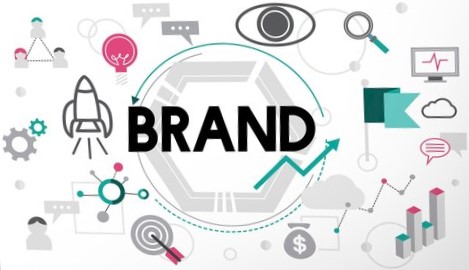When you think of some of the world’s most iconic brands, what’s the first thing that comes to mind? Often, it’s the logo—and more specifically, the color of that logo. From the vibrant red of Coca-Cola to the serene blue of Facebook, colors play a crucial role in brand recognition and identity. But have you ever wondered why certain colors are chosen for brand logos? It’s not just about aesthetics; it’s about psychology. Let’s dive into how color choices in brand logos are deeply rooted in psychological principles and why these choices are so important.
The Power of Color in Branding
Color is more than just a visual element; it’s a powerful tool that can evoke emotions, convey messages, and influence perceptions. In branding, color is often the first thing people notice, and it creates an immediate impression—one that can last a lifetime. According to studies, color can increase brand recognition by up to 80%, making it a critical component of a brand’s identity. When used effectively, color can differentiate a brand from its competitors, foster brand loyalty, and even drive purchasing decisions.
Understanding Color Psychology
Each color carries its own psychological significance, which can vary depending on context, culture, and individual experiences. Here’s a breakdown of some common colors used in brand logos and the emotions they typically evoke:
- Red: Excitement, passion, and urgency. Red is a high-energy color that grabs attention and creates a sense of urgency, which is why it’s often used in clearance sales and fast-food chains. Brands like Coca-Cola and Red Bull use red to evoke excitement and enthusiasm.
- Blue: Trust, dependability, and calmness. Blue is associated with stability and reliability, making it a popular choice for financial institutions and tech companies like American Express and IBM.
- Green: Health, growth, and tranquility. Green is often linked to nature and health, which is why it’s commonly used by brands in the health and wellness industry, such as Whole Foods and Tropicana.
- Yellow: Optimism, energy, and attention. Yellow is a bright and cheerful color that can create feelings of happiness and positivity. It’s often used in brands targeting younger audiences, like McDonald’s and Snapchat.
- Black: Sophistication, luxury, and mystery. Black is a classic, timeless color that exudes elegance and sophistication. Luxury brands like Chanel and Louis Vuitton use black to convey exclusivity and high-end appeal.
- White: Simplicity, purity, and cleanliness. White is often associated with minimalism and simplicity, making it a popular choice for brands that want to convey a clean and modern image, such as Apple and Nike.
- Orange: Creativity, enthusiasm, and friendliness. Orange is a playful and energetic color that can stimulate creativity and enthusiasm. Brands like Nickelodeon and Fanta use orange to create a fun and lively image.
- Purple: Royalty, wisdom, and luxury. Purple is a color that has long been associated with royalty and luxury, making it a popular choice for high-end products and services, such as Cadbury and Hallmark.
- Pink: Femininity, warmth, and nurture. Pink is often used to target female demographics and is associated with softness and nurturing qualities. Brands like Barbie and Victoria’s Secret use pink to appeal to their primarily female audience.
Choosing the Right Color for Your Brand
Selecting the right color for your brand logo isn’t just about choosing a shade that looks good; it’s about aligning the color with your brand’s values, target audience, and industry. For instance, a tech company might opt for blue to convey trust and reliability, while a health and wellness brand might choose green to represent growth and vitality.
It’s also important to consider the cultural context of colors, as the meanings of colors can vary significantly across different regions. For example, while white is associated with purity in Western cultures, it’s often linked to mourning in some Eastern cultures. Understanding these nuances can help ensure that your brand’s color choices resonate with your intended audience.
Brands That Nailed Color Psychology
Let’s take a look at a few brands that have effectively used color psychology in their logos:
- Coca-Cola: The iconic red logo of Coca-Cola is designed to evoke feelings of excitement and happiness, making it a perfect match for a brand that’s all about celebration and enjoyment.
- IBM: IBM’s blue logo is a classic example of using color to convey trust and reliability. As a leading tech company, IBM’s choice of blue helps establish it as a stable and dependable brand in the industry.
- Starbucks: Starbucks uses green in its logo to represent health, freshness, and a connection to nature. This aligns with the brand’s focus on ethically sourced coffee and environmental sustainability.
Wrap-up
Color psychology plays a vital role in brand logo design, influencing how consumers perceive and interact with a brand. By understanding the emotions and meanings associated with different colors, businesses can make informed decisions that strengthen their brand identity and create a lasting impression.
When it comes to building a brand, every detail counts—and that includes color. So, as you think about your own brand’s logo, consider not just what looks good, but what feels right. After all, the right color can make all the difference.
Call to Action
Take a moment to reflect on your brand’s color choices. Do they truly represent your values and connect with your audience? If not, we’re here to help. Contact us to create a logo that not only looks great but also resonates with your customers on a deeper level.




